This article is part of the Under the Lens series
LIHTC: The Good, the Bad, and the Very Complicated
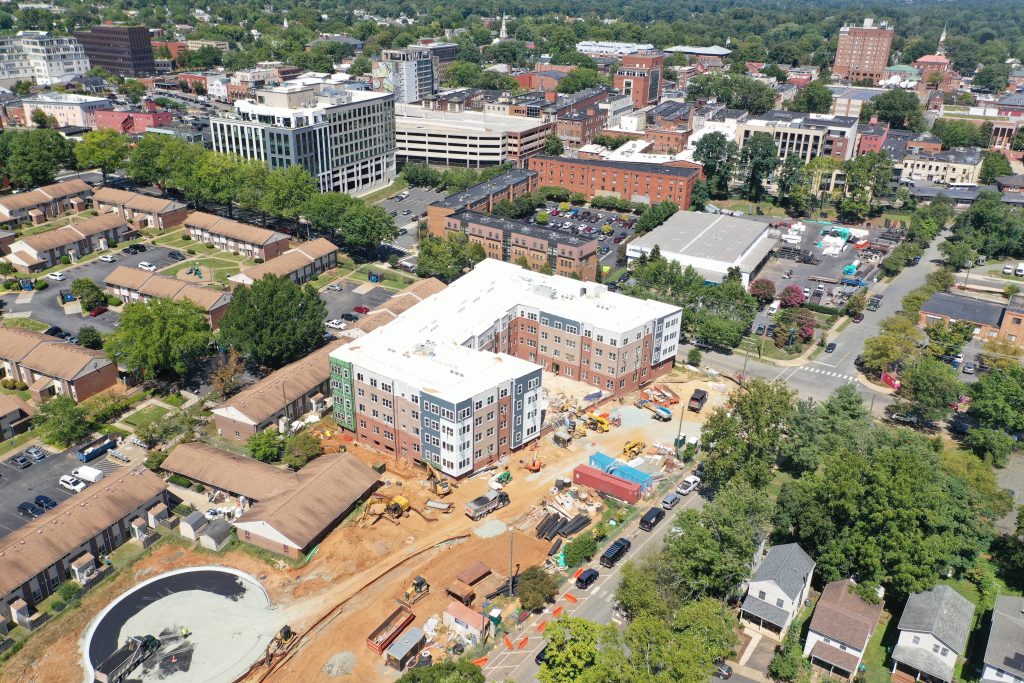
Kindlewood (formerly known as Friendship Court), seen from above. Photo courtesy of the National Housing Trust
While the Low-Income Housing Tax Credit (Housing Credit) helps attract private investment to the development of affordable rental homes, the complex legal structures required to facilitate the tax benefit often preclude meaningful opportunities for tenant or community ownership, or tenant asset building. Yet there are cases where communities, development partners, and local governments have collaborated to advance resident ownership, control, or financial benefit in Housing Credit properties.
The Stewards of Affordable Housing for the Future (SAHF) is a collaborative of nonprofit affordable housing developers. Its member portfolio includes approximately 2,000 properties around the country, 1,070 of which have been financed with the Housing Credit.
We recently conducted a scan of the SAHF member portfolio to identify models that have successfully introduced some form of resident ownership or control, or an arrangement that allowed residents to build wealth, with a particular focus on Housing Credit properties in their extended compliance period (after Year 15). Though not exhaustive, this scan identified examples of ownership and transaction structures that share power or financial benefits with residents and resident-led organizations. From these examples, we have identified key considerations for the design, implementation, and scaling of structures that can build wealth and power in the Housing Credit portfolio.
These examples fall into three broad categories:
- Resident associations become part of the entity that owns the housing
- Residents and resident associations are not part of the ownership entity, but benefit in some other way
- Lease-to-own homeownership or cooperative ownership models
Notably, although there are limited examples of Housing Credit transactions that were planned from the beginning to convert to homeownership or co-op structures after Year 15, we did not identify any that were designed after initial closing and created individual “household” ownership interest.
Resident Associations in the Ownership Entity
The most common method of introducing resident ownership or control at properties, particularly after Year 15, was by introducing a resident association into the ownership entity. In most cases, this was facilitated by a tenant right of first refusal under local law or other regulatory requirement—though we found at least one example of voluntary inclusion. The LIHTC program has its own right of first refusal provision, which is typically assigned to nonprofit developers, but resident associations can be included in that requirement as well. This ROFR must be set up at the initial closing and cannot be added later. Among these examples, the benefits of ownership typically remain with the resident association for the benefit of all residents rather than flowing directly to individual resident households.
A Partnership Between Developer and Resident Association: Mass Place
A tenant right of first refusal can create a pathway for a resident association to exclusively own the property, but may also be an opportunity for the resident organization to partner with a seasoned developer that can handle recapitalization of the property and ongoing asset management. At Mass Place Apartments in Northwest Washington, D.C., a Housing Credit–financed apartment community in a gentrified neighborhood, after the initial compliance period, the owner sought to transfer the property and the residents exercised their rights under the Tenant Opportunity to Purchase Act (TOPA). The resident association assigned its ownership rights to a SAHF member developer, who purchased the building and conducted a $6 million rehabilitation focused on improving building systems, energy efficiency, and property amenities. As a part of the negotiations, the resident association maintained a 45 percent interest in the managing member of the entity that owns the property. The resident association will be awarded 15 percent of the developer fee, which will be placed into a trust to be used to fund resident services coordination at the property.
Additionally, as a member of part of the ownership entity, the resident association will receive additional payments when the property has positive cash flow. While this arrangement does not directly build wealth for individual resident households, the residents retain a meaningful voice at the property through an ownership interest and have access to ongoing services and resources derived from the property.
Transitioning to Resident Ownership: Meridian Manor
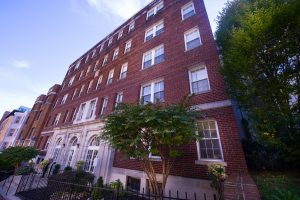
Meridian Manor. Photo courtesy of the National Housing Trust
Meridian Manor Apartments, a 34-unit property in the District of Columbia, is an example of a two-step path to ownership by a resident association. In 2001, the property was sold, and the tenant association exercised its rights under TOPA, assigning the rights to a SAHF member developer who conducted a major rehabilitation financed with the Housing Credit.
At that time, the resident association, through its counsel, negotiated to hold the right of first refusal under the Housing Credit program so that at Year 15 the association would have the opportunity to fully own the property. The property has reached Year 15, the investor has exited, and the association was taking ownership at the time of our survey; it will benefit from all cash flow.
The association has engaged the SAHF member to continue asset management duties on a contract basis.
This two-step approach provides an opportunity for a resident association to develop capacity for ownership and a strong working relationship with a developer that can continue on a consultation basis long after the association assumes ownership.
A Long-term Pathway to Resident Ownership through a Local Partner: Columbia Heights Village
Columbia Heights Village Apartments, in a rapidly gentrifying neighborhood of the District of Columbia, is a unique example of how a resident association can be incorporated into and benefit from an ownership entity. For many years, a local housing corporation has been involved with the property. When the property was acquired by a large developer in the early 2000s, a unique structure was developed under which the local housing corporation had an 11 percent interest in the ownership entity, but also had a right to purchase the interest of the developer after Year 15. At the same time, the resident association was given the right to purchase an interest in the ownership entity after Year 15. The rights of the local housing corporation and the resident association were linked and could only be exercised together.
To facilitate the resident association’s exercise of its rights, the association was given a percentage of the cash flow during the initial compliance period, which was held in an escrow account, exclusively for use in exercising the purchase right. By the end of the initial compliance period, the escrow had amassed approximately $1 million.
To facilitate the acquisition of the ownership interests and recapitalization of the property, the local housing corporation partnered with an experienced SAHF member and agreed to assign to the SAHF member a portion of the ownership interest it had the right to purchase. The resident association and local housing corporation exercised their rights to acquire the property from the developer. In the resulting partnership, the SAHF member has a 50 percent ownership share, and the local housing corporation and the resident association each have 25 percent interests in the ownership entity. Since the transaction closed, the resident association and local housing corporation have participated in the cash flow, which in turn funds services and activities for residents. A recapitalization is now planned, and proceeds from that transaction will generate significant revenue for the resident association.
Residents or Resident Associations Not in the Ownership Entity
The best examples of financial benefits flowing directly to residents were found in structures where residents or the resident association were not part of the ownership entity. In all of these examples, there was a local law or policy that catalyzed the negotiations that led to the transfer of power and benefits to community residents. It is also worth noting that these examples come from properties and communities where there is a recognized need for significant redevelopment.
Wealth Building for Residents through Developer Fee: Congress Heights
Congress Heights Apartments in the District of Columbia was previously owned by a company that neglected the property, resulting in sustained gravely unsafe and unhealthy conditions. The property was ultimately placed into receivership and, through litigation, the owner was forced to divest. The transfer of the property triggered TOPA rights and, although residents were relocated, those that remain in the tenant association are in the process of exercising their TOPA rights. The association is assigning its ownership rights over to a SAHF member, who will demolish the substandard housing and redevelop the property, preserving the right of residents to return to the new site.
With the assistance of counsel, the resident association negotiated for a significant portion of the total developer fee in exchange for the assignment of its rights under TOPA. Half of the resident portion will be paid upon acquisition of the property, and the other half will be paid upon milestones in the redevelopment of the property as the developer fee is earned. The funds will be divided among the 10 resident association member households that remained in the property at the time of the transaction.
Legal counsel for the residents helped structure payments and provided guidance to help minimize income and asset eligibility implications for housing assistance, other public benefits, and overall tax liability.
It’s important to note that the deplorable conditions and years of neglect at the property played a significant role in the negotiation of this payment and should be avoided, not replicated. As with other examples across the SAHF member portfolio, the creation of this structure was facilitated by local law but could be voluntarily replicated by willing owners.
Informal Resident Control Driven by Local Partner: Friendship Court
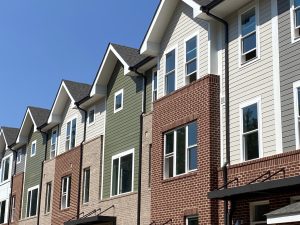
Kindlewood. Photo courtesy of the National Housing Trust
Friendship Court Apartments, a Housing Credit property in Charlottesville, Virginia, is an example of an informal model of resident control driven by the engagement of a local partner. Friendship Court is a 150-unit garden-style property two blocks from the Downtown Mall in Charlottesville. In 2002, a SAHF member acquired the property with a local partner as a co-general partner to conduct a renovation. In 2015, the city of Charlottesville defined the area around the property as a strategic planning area, and dedicated funds and attention toward promoting investment in the area. As part of the planning for the redevelopment of the property, the Friendship Court Advisory Committee was established.
In 2017, the local partner initiated an antiracist, inclusive, and collaborative approach to redevelopment planning. The advisory committee was restructured as a more representational body consisting of nine resident members elected by their neighbors and six members from the broader Charlottesville community. The advisory committee is deeply engaged in the planning and development of their future homes through a multiphased redevelopment with the local partner and the SAHF member.
While the advisory committee has no ownership stake in the property, it has a significant voice in decision making during redevelopment. This level of resident engagement has helped drive design decisions and pushed the redevelopment team to consider options for creating homeownership opportunities and permanent community control through a community land trust in later phases. The increased engagement has resulted in higher expenditures for consultant and developer staff time for activities such as site planning, building design, community planning, and capacity building for the Advisory Committee members, but this structure has proven to be a successful and rewarding model of resident engagement.
Lease-to-Own Homeownership and Cooperative Models
Homeownership models in Housing Credit properties are uncommon, but where they exist, they are typically achieved through cooperative structures for larger multifamily buildings or rent-to-own structures for single family rentals or duplexes financed as part of a portfolio or development. We didn’t find individual unit ownership or condominium structures in multifamily buildings, such as garden or tower style, in our scan of the SAHF member portfolio. We believe this is because condominium structures can be costly to create and because available legal and financing products make it difficult to sell one unit at a time as residents become ready while maintaining financing and a sustainable capital maintenance plan for the balance of the building. In a single-family, townhouse, or duplex structure, this can be easier to achieve given the more discrete nature of the homes.
In many examples, these structures seemed to arise in response to pushes from the community or incentives from local government. State and local governments incentivize the creation of resident ownership opportunities by offering funding, land grants, and other resources to willing developers.
This is the case at a major development in Chicago, where a SAHF member won a competition to develop an innovative, carbon-free, and resilient multiphase project that includes constructing 31 limited equity cooperative units. This project is still in the planning phase. It is critical to note that even with incentives, these models are often not viable in high housing cost markets given the level of subsidy needed to create affordable monthly payments for residents. For example, a SAHF member that operates in California noted that the extremely high cost of acquiring or developing homes has been the most significant barrier to attempts at the lease-to-own model. Even when the state has offered bonds and funding to offset the high per unit cost of development, it hasn’t been enough to make projects feasible and affordable for residents. Further, the many layers of needed funding bring additional program requirements that can complicate or preclude opportunities for resident ownership.
SAHF’s research did not uncover examples of successful homeownership conversion at deeply subsidized properties. While the Section 8 program does offer limited pathways to homeownership, such as through Section 8 homeownership vouchers, this promise has not been fully realized. This is in part due to the overall complexity of the program, capacity challenges at public housing agencies, and the general misalignment between the program’s regulations and the economics prevalent in most markets.
Elements of Successful Ownership Conversions
In our discussions with developers and stakeholders involved in planning and executing ownership conversions, several key principles emerged.
Soft Funding and the Equivalency Principle for Future Homeowners
Early and thorough planning for the conversion to homeownership is necessary for long-term success. One consideration for structuring these models is ensuring that the resident’s monthly cost after the conversion is no greater than their rent payment prior to conversion. In order to do this, developers must drive down costs—which can be achieved by minimizing the amount of hard debt on the property through use of grants, donated land, and other sources.
Significant and well-documented partnerships with state or local governments at the time of initial development are also key to successfully converting rental Housing Credit properties to homeownership models. The Cleveland Housing Network, which has developed a robust lease-to-purchase program for residents in some of its Housing Credit properties, stresses the importance of documenting dedicated funding, in their case, through the federal HOME program, with upfront agreements on debt repayment or forgiveness structures upon conversion of the property to ownership. Without agreeing upfront to repayment terms applicable at Year 15, the owner is at risk of being asked to repay funds made available as soft loans, which creates greater financial demands on the property and makes it more challenging to offer affordable purchase prices to residents.
Maintenance and Capital-Needs Planning for the Long Term
Developers that we spoke with both in and outside the SAHF member network stressed the importance of planning differently for the maintenance and capital needs of properties that intended to undergo a homeownership conversion than for other properties. While owners of Housing Credit properties strive to maintain the properties in excellent condition, they often assume that there will be a recapitalization to pay for major capital needs between Year 15 and Year 20. If a property is going to be converted to ownership, an outstanding list of capital needs can make the process more costly and complicated. Instead, developers seeking to facilitate a conversion should have more aggressive maintenance and replacement plans before Year 15 to try to minimize needs that must be addressed by the homeowner.
Early Communication, Education, and Assistance for Prospective Homeowners
We also spoke to owners of properties that intended to convert to an ownership structure but were unable to do so. Two common challenges created obstacles to conversion:
1) Insufficient financial support from local government and philanthropic partners to help residents afford the purchase options
2) Insufficient interest from residents, usually because information and resources weren’t made available early enough
Participants in successful conversions stressed that local governments contributed not only funds to help finance the construction or preservation of homes at the initial closing, but also made assistance available to homeowners at the point of sale in Year 15.
Developers of properties that were unsuccessful in converting stressed that having local governments with limited staff capacity or funds to help prospective homeowners was particularly challenging. At the same time, some developers noted that beginning conversations with the community about the purchase opportunity at Year 13 or 14 is too late, and that five years or more of coaching and communications planning would be more effective.
Early and Thorough Planning for Conversion to Homeownership: Homes at the Glen
Homes at the Glen, a 56-unit SAHF member townhome community in Annapolis, Maryland, demonstrates the importance of planning for the post-Year 15 future of a lease-to-own property as early as possible. Homes at the Glen was financed with Housing Credits and three loans that the owner planned to repay when all 56 homes were sold post–Year 15. However, two and a half years after the property entered its extended compliance period, only 12 of the 56 units had been sold. The slow rate of sales created challenges in repaying the debt and in operating the remaining 44 units as a rental property. The property has capital needs due to its age such as replacement of roofs, water heaters, and appliances. It has been a challenge to identify a new financing mechanism for those repairs while both preserving the option to continue selling homes and balancing the responsibilities of the 12 homeowners in maintaining shared community assets, such as parking and the community center.
While the property owner has taken steps to both incentivize and prepare residents to participate in the homeownership opportunity—including partnering with a local nonprofit that offers a homeownership preparedness class, offering an opportunity to escrow a portion of rent payments to help with downpayment assistance, and connecting residents to a downpayment assistance program run by the city—uptake remains slow. The economic challenges early in the COVID-19 pandemic contributed to this slow uptake.
The SAHF member portfolio has three additional lease-to-own properties at various stages, and has begun planning for the post-Year 15 future of these properties as early as possible based on their experience with Homes at the Glen. This includes thinking about how financing will be structured to meet the long-term needs of the properties and how to engage with residents in ways that build their interest and readiness for homeownership.
Seven Key Takeaways
- Local policies can be catalysts
Many of the examples in the SAHF member portfolio come from Washington, D.C., where a strong tenant right of first refusal is in place. In other jurisdictions, such as Charlottesville and Chicago, interest from local government and incentives in local financing sources have driven developers to create development plans and ownership structures that empower residents and/or share in cash flow. While these local policies have been catalyzing, they are not essential. The Housing Credit program allows for a right of first refusal that can be held by resident associations.
2. Significant advance planning and education for residents and resident associations is needed
Properties that successfully moved residents to homeownership provided education and planning for home purchase at move-in or many years before Year 15. Similarly, in properties where a resident association held a right of first refusal or other opportunity to enter the ownership, development partners stressed the importance of an established resident association and the time to ensure that resident leaders have the partners and resources needed to navigate the transaction.
- Partners should be seasoned in working with residents and resident groups
We heard consistently that SAHF members were selected for their roles in partnerships with resident associations based on their experience working with similar groups and their commitment to mission. The same developers stressed that community-based groups can be vital partners in engaging with residents and developing a long-term plan that best serves the community. The work of building trust with residents and resident groups can take some time and come at considerable expense.
- Seek experienced and well-resourced counsel for residents and resident groups
The pivotal role of legal counsel for residents in negotiating these structures emerged repeatedly in our interviews. The most beneficial structures seem to emerge where counsel has a rapport with the residents and resident association, is well grounded in affordable housing finance, and can navigate the complex implications of these structures on resident eligibility for housing assistance and other benefits. However, it was also noted that there are a limited number of attorneys with the willingness to take on this role. In addition, it’s important to allow time and funding to cultivate this strong working relationship between attorney and residents.
- Financial benefit can be achieved without ownership
In properties where individual ownership structures were infeasible or not pursued, we still found structures that shared resources and offered the opportunity for residents to build wealth. These structures generally provided residents or a resident association funds from one of two sources: (1) payments from proceeds of recapitalization at or after Year 15 or (2) an ongoing interest in cash flow generated from property operations.
In most examples, financial benefits flowed to a resident association in connection with an ownership stake in the property. However, Congress Heights demonstrates how a right of first refusal could be leveraged to negotiate benefits directly to the tenants who hold it without requiring them to take a long-term interest in the property. An owner could choose to make these benefits available to residents without an ownership stake or right of first refusal, particularly after the investor has left.
- Careful management of capital needs and reserves is critical
It is important to plan for the long-term needs of tax credit properties. A transfer to individual ownership may mean that there is not a major recapitalization event at Year 15 or shortly thereafter, so groups utilizing homeownership models must reinvest cash flow into ongoing maintenance and replacements. Similarly, structures that shift ownership to resident associations need an adequate scope of work at recapitalization, well capitalized reserves, and a process for identifying and addressing future needs. Education and/or strong consultant support for resident associations/ownership groups is also key.
- Local real estate markets determine what is possible
Individual ownership structures worked well in lower- or moderate-cost markets where the cost to the resident of purchasing the unit could be kept affordable through lower development costs and reduction of the developer’s debt during the initial compliance period. Pairing a lower purchase price with additional local government assistance for purchasing households keeps costs low. In higher cost markets, higher initial development costs make it infeasible to reduce the debt on the property to a level that facilitates sale to households at a reasonable price, and the amount of soft debt/additional subsidy needed may not be achievable. However, in these higher cost markets, multifamily properties may experience greater appreciation in value and in rents, making structures that share cash flow and recapitalization proceeds with residents more viable and more lucrative for residents. Even so, these resources may not be sufficient to unlock homeownership for interested residents. For this reason, care should be taken to pair these structures with financial coaching and other resources to support longer term wealth-building, while ensuring that residents have long-term affordable rental housing that promotes stability and gives them a voice in how it is managed.
This article was adapted with permission from the SAHF report Ownership and Asset Building in Housing Credit Properties.
|
Now through Dec. 31, all donations to Shelterforce will be matched. Double the impact of your donation by supporting our work today. |

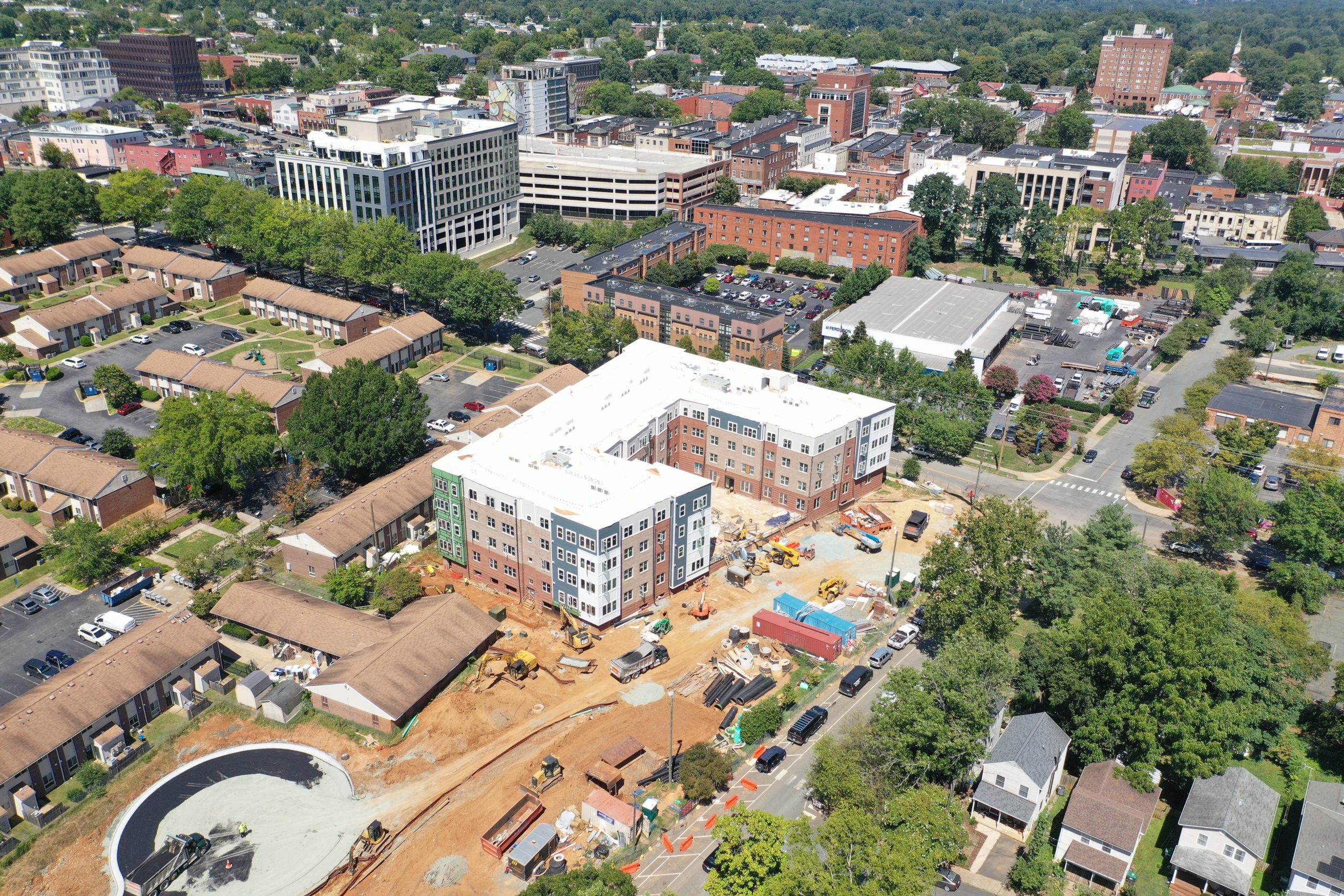


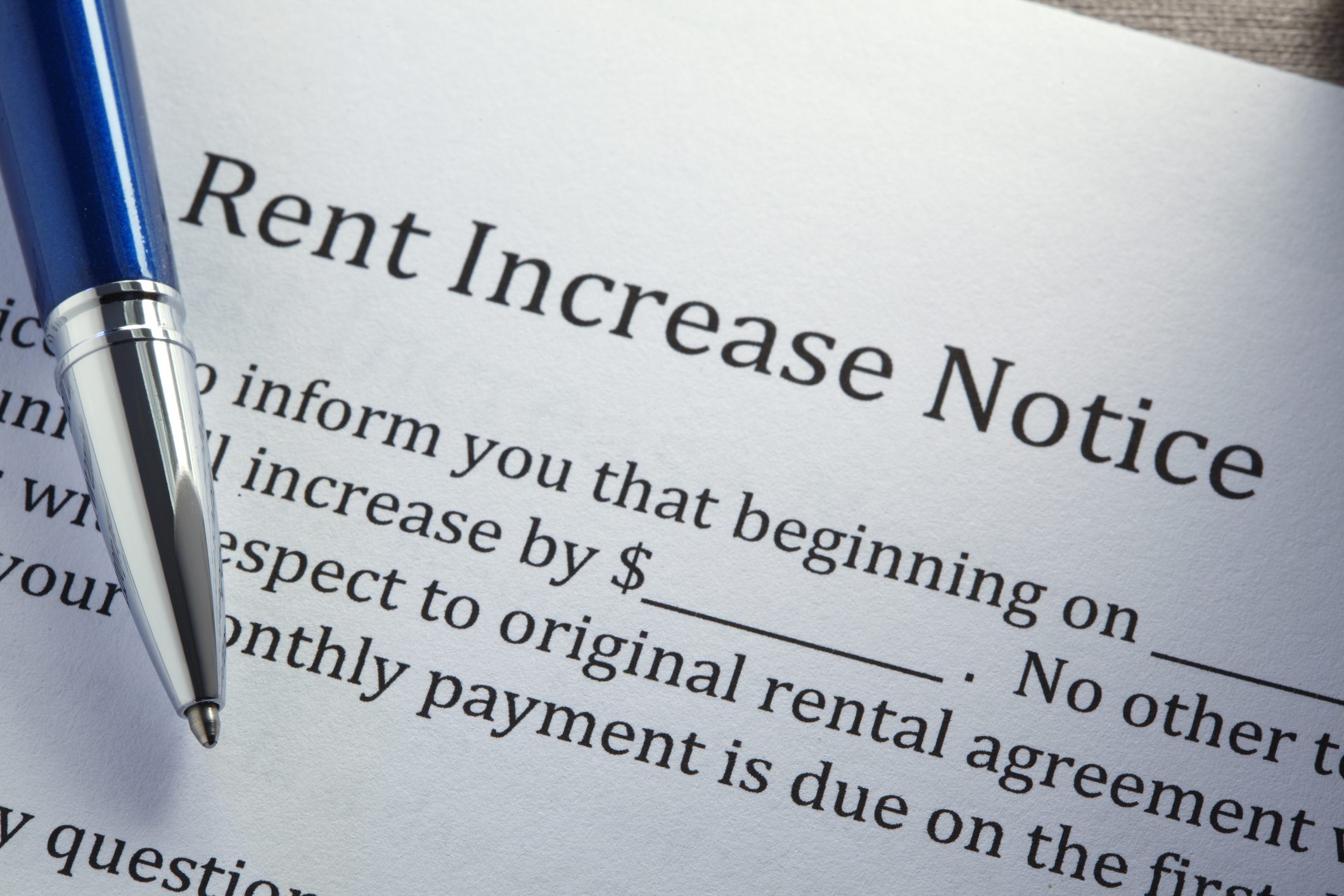

Comments